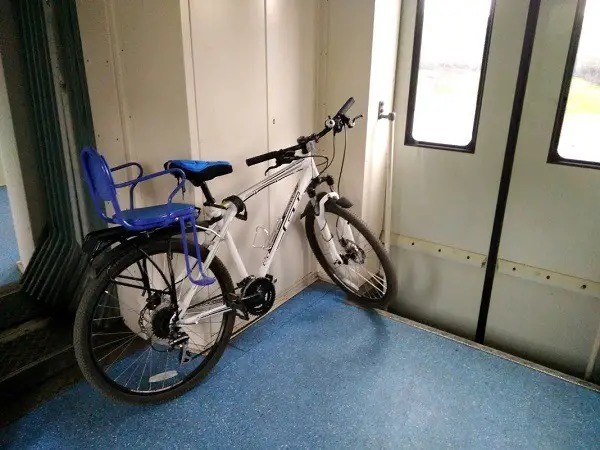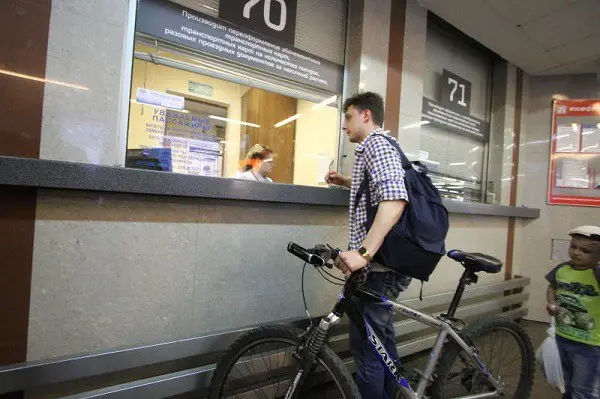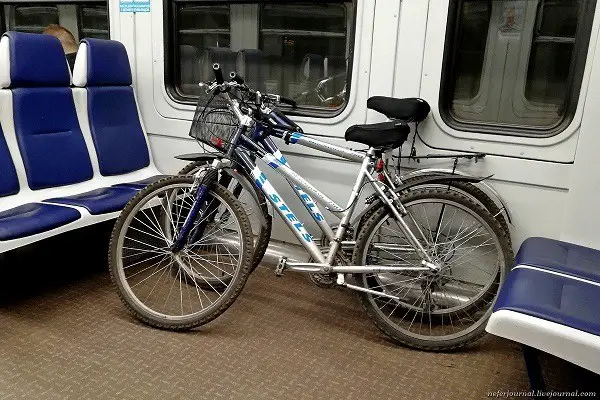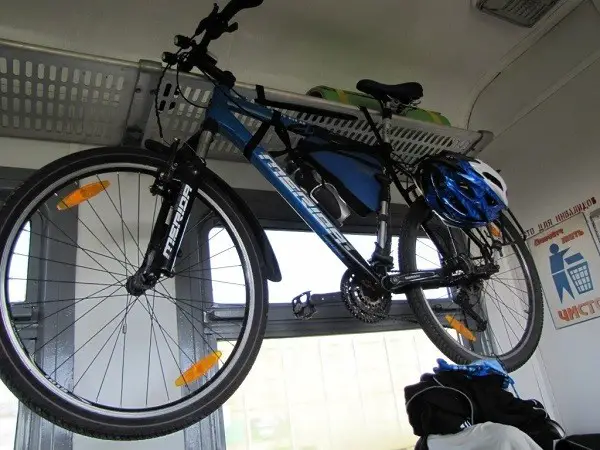With the advent of warm days, city dwellers head for places where fresh wind blows, trees sway, crickets sing and nature fills with its energy from within. Someone goes to a dacha, to combine business with pleasure, someone goes to his grandmother in the village, and someone, waiting for the weekend, traveling with friends to new cities and villages. And if a normal person enough to take with a backpack, the bicyclists have to think about how to organize the transport of bicycles in the train. If you reason logically, the bike does not fit in the concept of “carry-on luggage,” but also buy a separate ticket for an iron friend somehow wrong. It is better not to guess by coffee grounds and to get acquainted with an official document with clearly spelled out rules for carrying a bike in the train.
Carriage rules
As life practice shows, most cyclists easily and unnecessarily spend their bicycle in electric trains absolutely free. Simply put it in the vestibule or the beginning / end of the car so that the bike does not block the aisle. You can really do this if you need to ride a few stops. It’s unlikely the conductor will write you a ticket and ask you to get off the train. But situations are different: for example, on that particular day a raid is announced and controllers thoroughly check everyone. In this case you can get into an extremely unpleasant situation. Is it really necessary to pay for a bicycle on the train? According to RZD rules, the passenger has the right to carry a bicycle for free or for a fee in the vestibule. If you fear for the safety of your iron friend and don’t want to part with it, that is, you want to ride together with him in the car, then there are some nuances:
- Hand luggage. You may transport your bicycle free of charge if its dimensions and weight (up to 36 kg) do not exceed the permitted limit. In this case it should be dismantled and packed in a case and then placed in the upper shelf.
- Luggage. You must pay a fee if your bicycle does not meet the ‘carry-on’ requirement and its dimensions are larger than permitted. In this case, the bicycle may not be packed, but the vehicle must not interfere with other passengers and staff of the electric train, as well as not create obstacles in the way of exiting the cars.
In fact, if you need to ride just 2-3 stops, you can put the bike in the vestibule and fix it securely so that it won’t fall down if the train brakes. But free bike on the train is risky for those who travel long distances. In addition, if you are traveling in a group (at least 3 people), the accumulation of your bikes in the same vestibule is sure to attract the attention of the controller, who will definitely require permission to carry luggage.
Do you need a ticket?
If you think about the question if you have to pay for the bicycle on the train, you can assume that no: checkers only check the availability of tickets and no one pays attention to the luggage. On the one hand this is true. But let’s not forget that conductors also have inspections at work, and according to official documents the passenger must pay for luggage if its dimensions and weight exceed the permissible values for hand luggage. That is, if you disassemble your bike and pack it in a bag, and its weight is still within 36 kg, then you can absolutely safely buy a ticket just for yourself and go on a trip. If you for some reason do not want to disassemble and assemble the bike back, it’s better to pay for the luggage – it would be quieter. How much does it cost to put a bike on the train? The answer to that question is below.
Cost
Since now the bicycle has become a fashionable means of transportation, most railway companies offer promotions or so-called happy hours for passengers, when you can carry it on electric trains for free. For example, on Moscow-Tverskaya PPK trains, as well as on the MCC and Aeroexpress trains (except the Odintsovo-Moscow section), a bicycle ticket on the train is not required, just a ticket per passenger. On the days of special events (for example, the same “Veloparad”) passengers can carry their bikes for free.
There is one point here: the passenger must take a so-called zero ticket for a bicycle (there are terminals specially for this in the ticket offices of Russian Railways). If there is no such ticket, you will have to pay 100 rubles and continue to ride quietly. At other time unpacked bike transportation is paid according to tariffs (MT PPK: 30 rubles at any distance, CPRK: up to 100 km – 60 rubles, over 100 km – 120 rubles).
And now for an excellent tip for cyclists who don’t want to bother with zero tickets and run around the station looking for a terminal: you can take your bike for free at any time. True, your bike must be on Eccentrics or have to carry a wrench. Remove the front wheel and voila: now it’s not a bike, but hand luggage, according to CPPK rules. And in general, controllers often don’t know how to deal with passengers carrying bicycles themselves. In any case, the situation must be resolved calmly and judiciously, without conflict.
Ways of placement
Leaving a bicycle in the vestibule is not a good idea. Firstly, it can interfere with other passengers to enter and go out of the car. So you have to run to the bike before each stop and remove it from the train so that people can safely exit or enter. Secondly, in older electric trains, there is only enough space in the vestibule for passengers to exit and enter: to say that a bicycle can be placed there freely without disturbing people, is impossible. Therefore, many cyclists take the bike with them into the carriage and decide on the spot how to deal with this situation.
The bike can be suspended by the saddle from the top shelf. But this should be done in such a way as to eliminate the likelihood of falling bike on someone’s head. In modern cars there are specially designed seats for bulky luggage. This is exactly what you need. As a rule, in these places also have special mountings for bicycles.
Prohibitions
If you need to ride the train and you plan to take your bike with you, try to find out in advance where to buy a zero ticket for your bike. If your trip turns out to be spontaneous and you haven’t had time to prepare your bike for the trip (no wrench, cover, etc.), it’s wise to pay for your luggage so that you don’t have to ask the controller unnecessary questions.
Remember that your bike should not interfere with other passengers and train staff, and should not interfere with exiting the cars.
Conclusion
No matter what happens in the train, remain, first and foremost, a person. Do not argue with the controller and do not insult people, if your bike, in their opinion, blocking the aisle or just violates the harmonious picture of the car. It’s better to smile back and give the man a candy. Remember that carrying a bicycle on the train is your problem and you need to deal with it appropriately. Take a zero ticket or remove the front wheel from the bike – at least the controller will not have unnecessary questions to you. And then it remains only to secure the bike on the top shelf, so it does not interfere with the passengers.










